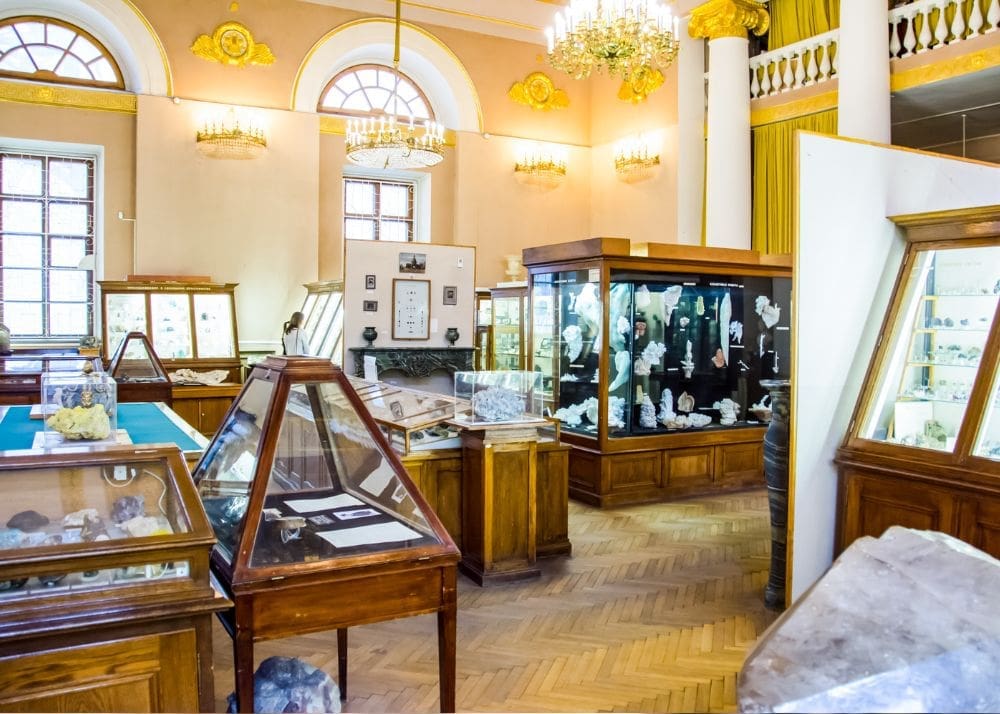Mineral Exhibits: A Portal to Earth’s Geological Bounty
The Timeless Appeal of Mineral Exhibits
Mineral exhibits have long been a gateway for enthusiasts of all ages to admire the splendors of geology. This engaging hobby connects people from a child’s curiosity to the seasoned wisdom of an 80-year-old. Not only are these geological treasures extracted from the depths of the earth, but they are also meticulously curated and displayed in many towns, bringing the marvels of the earth’s crust closer to the public.
Discovering Treasures in Your Backyard
Where can one experience the magnificence of mineral exhibits? These mineral collections are showcased in nearly every corner of the country, inviting inspection and awe in every state and beyond. This storied science boasts displays in major museums, academic institutions, and historical sites, making it accessible and educational for all.
10 geology museums and their respective states:
| Geology Museum | State |
|---|---|
| Smithsonian National Museum of Natural History | District of Columbia |
| American Museum of Natural History | New York |
| Harvard Museum of Natural History | Massachusetts |
| Field Museum of Natural History | Illinois |
| Denver Museum of Nature & Science | Colorado |
| The Perot Museum of Nature and Science | Texas |
| California Academy of Sciences | California |
| Fernbank Museum of Natural History | Georgia |
| Houston Museum of Natural Science | Texas |
| North Carolina Museum of Natural Sciences | North Carolina |
These museums offer a rich variety of geological exhibits and are distributed across the United States, providing ample opportunities for education and enjoyment in the field of geology.
The Geographic Diversity of Mineral Exhibits
Mineral exhibits are a testament to the nation’s rich and varied geology. Beyond the American West, renowned for its mining districts, significant mines and geological displays dot the landscapes of New York, New Jersey, and the southern states of Florida, Alabama, and Arkansas. Far-reaching into the eastern territories, Vermont, Indiana, Tennessee, Virginia, and Georgia also offer rich quarries and geological sites.
Digging Deeper into Geology
Engaging in mineral exhibits is an exploration that bridges our present to the earth’s ancient past. Every mineral from a Florida calcite to a Michigan copper tells a story millions of years in the making, allowing us to hold a piece of history in our hands.
Building Community Around Geological Wonders
Mineral exhibits do more than showcase geological specimens; they build bridges between people. They serve as community focal points, attracting both aficionados and the general public, creating a shared space for learning and appreciation of natural history.
Embarking on a Mineral Adventure
For those drawn to the allure of Earth’s subterranean beauty, resources like Miamiminingco.com provide the perfect starting point. They offer tools for budding geologists, such as gem mining buckets, and a selection of Rock and Mineral specimens for all levels of interest in mineral exhibits.
FAQ
- What is the appeal of mineral exhibits? Mineral exhibits captivate people of all ages with the splendors of geology, showcasing the natural beauty and diversity of minerals extracted from the Earth. These exhibits connect individuals from a young child’s curiosity to the seasoned wisdom of older adults, providing an engaging and educational experience.
- Where can one find mineral exhibits? Mineral exhibits are available in nearly every corner of the country. They are displayed in major museums, academic institutions, and historical sites, making them accessible to a broad audience interested in geology.
- Can you list some prominent geology museums in the United States? Yes, notable geology museums include:
- Smithsonian National Museum of Natural History in Washington D.C.
- American Museum of Natural History in New York
- Harvard Museum of Natural History in Massachusetts
- Field Museum of Natural History in Illinois
- Denver Museum of Nature & Science in Colorado
- The Perot Museum of Nature and Science in Texas
- California Academy of Sciences in California
- Fernbank Museum of Natural History in Georgia
- Houston Museum of Natural Science in Texas
- North Carolina Museum of Natural Sciences in North Carolina
- How do mineral exhibits contribute to education? Mineral exhibits serve as educational platforms that highlight the diversity and significance of geology. They offer insights into the Earth’s geological processes and history, fostering a deeper understanding of natural sciences among visitors.
- What geographical diversity can be seen in U.S. mineral exhibits? The United States boasts a rich and varied geology, with significant mineral exhibits not only in the famed mining districts of the American West but also in states like New York, New Jersey, Florida, Alabama, Arkansas, Vermont, Indiana, Tennessee, Virginia, and Georgia.
- How do mineral exhibits connect people to Earth’s history? By showcasing minerals like Florida calcite or Michigan copper, exhibits link visitors directly to Earth’s ancient past, with each specimen representing millions of years of geological processes.
- How do mineral exhibits build community? Mineral exhibits act as community focal points, drawing both enthusiasts and the general public. They create shared spaces for learning, discussion, and appreciation of natural history, thereby strengthening community ties.
- What resources are available for those interested in starting a mineral collection? Websites like Miamiminingco.com offer resources for budding geologists, including gem mining buckets and a variety of rock and mineral specimens suitable for all levels of interest in mineral exhibits.
- What stories do minerals tell? Every mineral has a unique story related to its formation and the geological events that created it. These stories provide a tangible connection to the vast timeline of Earth’s history.
- How do mineral exhibits cater to all ages? With their wide appeal and educational value, mineral exhibits attract a diverse audience, from young children exploring their first geological interests to older adults deepening their lifelong appreciation of the sciences. They offer interactive and informative experiences suitable for every age group.

